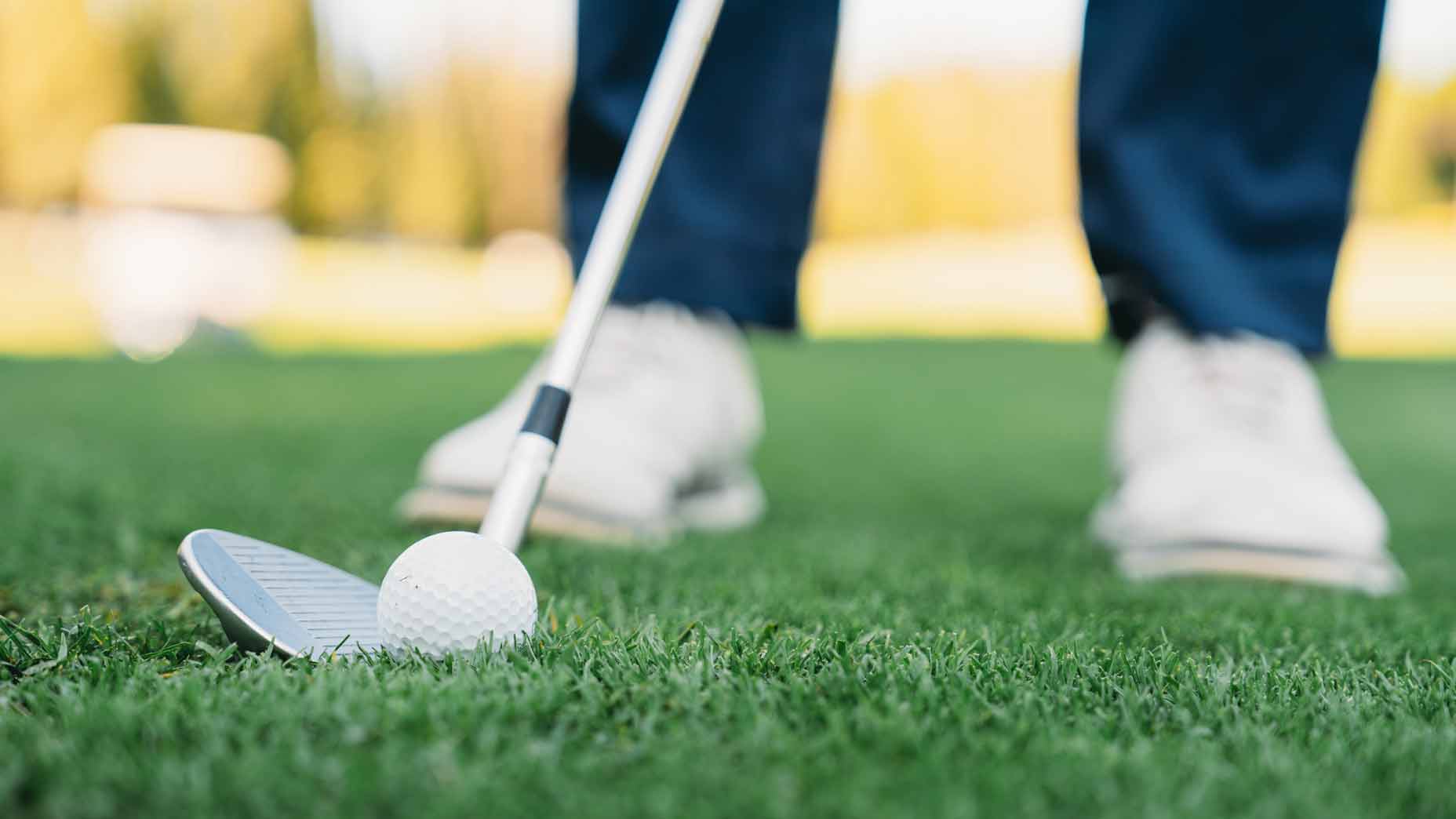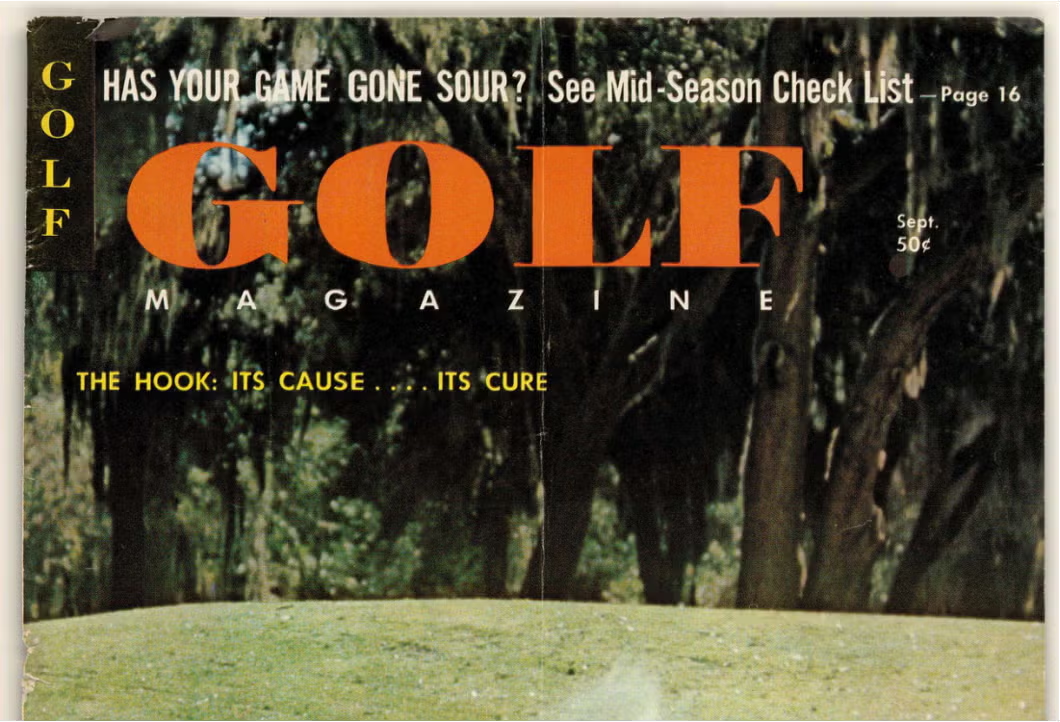Golf instruction is ever-evolving, but the best advice stands the test of time. In GOLF.com’s new series, Timeless Tips, we’re highlighting some of the greatest advice teachers and players have dispensed in the pages of GOLF Magazine. Today we look back to our July 1974 issue when Johnny Miller shared his secrets for shot shaping. For unlimited access to the full GOLF Magazine digital archive, join InsideGOLF today; you’ll enjoy $140 of value for only $39.99/year.
Johnny Miller is among the greatest ball-strikers of all time. Although in the modern age he’s remembered more for his TV career than his playing days, it’s important to remember that Miller was a ball-striking savant in his prime.
One reason for his ball-striking excellence? The ability to hit any shot the course demanded. Whether it be a high shot or low one, a draw or a fade, Miller had the shot in his bag.
Back in July of 1974, Miller joined GOLF Magazine to share some of his secrets to his ball-striking excellence. Check them out below and you’ll likely learn a thing or two from one of the all-time greats.
Johnny Miller’s ball-striking secrets
Wn I was a junior, I had a very instructive lesson from my father. One day he took me out to Harding Park in San Francisco, with a bag of balls and some clubs, and steered me into a small grove of trees. When we were almost in the middle, he dropped the balls on the ground and pointed to the tops of the trees.
“Hit through those openings,” he said.
At first I had great difficulty selecting a club that would get the ball that high. Inevitably many of the shots would crash against limbs and fall to the ground. But the more shots I hit, the easier it became to judge the height. And nowadays when a tee shot strays into the woods I’m confident that I can find an opening somewhere.
You can learn from my lesson. Head for the woods and not only find some openings in the tops of the trees but try to hit shots between the trees. You’ll develop accuracy, the ability to recover. Above all else, you’ll learn to hit the ball high.
Hitting the ball high has never really been a problem for me because I have a natural tendency to hit it that way anyway. Every now and then though, I’ll need to hit an extra-high shot, to get over trees or trouble of some kind. There are quite a few players who think the secret to this shot lies in an out-to-in swing plane and an open clubface. It may be fine for them, but it’s not for me. In my opinion, any variation shot should be made with the least possible deviation from the regular swing. If the changes are minor, the swing won’t feel unnatural.
High shot
To hit the ball high, I move the ball forward slightly, just to the left of my left heel. Next, I widen my stance by moving my right foot a few inches to the right. This automatically moves my upper body back behind the ball, which is essential for getting the ball up quickly.
With the upper body in the normal position, the tendency will be to hit down on the ball more. Jack Nicklaus is the only player I know of on the tour who hits down, yet still produces extremely high iron shots.
This is, in my opinion, because of an extremely strong leg drive in his downswing. For the average club player, I recommend those two simple changes: wide stance and ball forward. Leave the rest to your normal swing.
Fairway bunker shot
A shot that gives many players problems is the fairway bunker shot. Just like the others I’ve discussed, the changes here are minor. The one thing you don’t want to do is to hit the ball fat, especially if you have around 125 to 150 yards to go to the green. To insure that you don’t, I first recommend what I call “standing erect.” By this I mean, instead of standing with your knees naturally flexed, straighten up just a little. This will help you to strike the ball first, rather than striking the sand first. If anything, it’s better to half skull the ball than hit it fat and have it travel only 20 yards.
If the ball is resting on the upslope of the bunker, you must make some compensations. Your swing plane must match the contour of the sand. On an upslope you would of course hit up more to prevent the clubhead from digging into the sand and abbreviating your follow-through. On the downslope you’d hit down and through to eliminate the danger of topping the ball.
In any fairway bunker be sure that you’re not gripping the club too hard. If you grip too tightly, you’ll become tense and your swing will be jerky. It’s vital to remain loose. Grip the club so that it rests comfortably in both hands without excessive pressure. Now just keep your swing smooth.
Flier in the rough
There is another shot on which you can apply the basics of the fairway bunker shot — a fluffy lie, where, should you ground the clubhead on the grass behind the ball, it might roll and cost you a stroke penalty. Grip down the shaft an inch or so, depending on how much the ball is elevated. Hold the clubhead off the ground and stand erect. The club should rest comfortably in your hands. Now swing smoothly and make a conscious effort to sweep the ball off the grass. Here again, hitting down will do you no good.
It is always the player who takes the most into consideration who comes up a winner. That’s true not just of the professional on tour but of the club golfer also. Let me ask you a question: Where was the pin on the 18th hole the last time you played it? If your answer is “I don’t know,” then it means the shot you hit into the green was a “hit and hope a lot.” That’s no good. Always take the pin placement and the type of green into consideration, regardless of whether you plan to draw it, fade it or hit it straight.
Draw
Say the pin is tucked over on the left-hand side with lots of green to the right. The type of shot that allows you the most room for error is a draw. If you happen to hit it straight, it’s still going to catch the green on the right. Even more important, if you allow correctly for a draw, and it lands to the right of the hole, it will, because of the counter-clockwise spin, take a long skid and roll to the left.
Do you see now how you can make that spin work for you? You’ll always have the ball working toward the hole, providing it lands right. If you don’t allow correctly for the draw and it lands left of the hole, the ball will be rolling away from the pin.
Fade
Conversely, if the pin is over on the right with lots of green to the left, a fade would be the proper shot. When you fade the ball, however, there is considerably more spin on the ball, which causes it to take more of a straight up bounce when it lands. Then it comes to an abrupt halt. That’s why you see so many of Trevino’s shots spin back. He fades everything.
Punch
If the green slopes down from back to front, a punch shot will produce the best results because it has a low trajectory. This is also a good shot into a double-tiered green. However, I’ve found that a draw will, because of that long skip-and-roll, combat the hill going up to the second tier, just as well as, if not better than, a punched shot.
One thing is for sure: If the pin is back on a two-tiered green, you surely don’t want to hit a high shot. If it bounces on the top level, it’ll go over the green, and if pitches in between, of course it will roll back down to the bottom level. So a low shot is always best.
Latest In Instruction

Zephyr Melton
Golf.com Editor
Zephyr Melton is an assistant editor for GOLF.com where he spends his days blogging, producing and editing. Prior to joining the team at GOLF, he attended the University of Texas followed by stops with the Texas Golf Association, Team USA, the Green Bay Packers and the PGA Tour. He assists on all things instruction and covers amateur and women’s golf. He can be reached at [email protected].




















